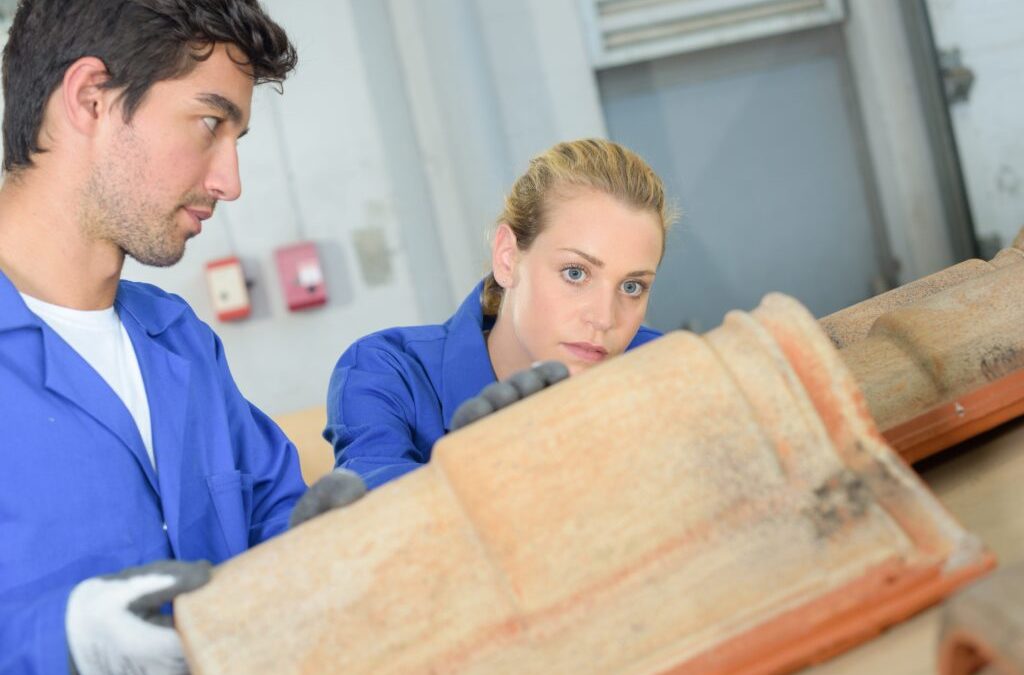Tile roofs are beautifully crafted masterpieces that support and protect a building. It takes a true artist to perfectly sort and place the tiles that build up an entire roof. Cache Roofing, a Jacksonville roofing company, explains that while for many, tile roofs may seem like just another form of roofing material that tends to be orange or on older buildings, tile roofs are exquisite works of art.
Here Are 8 Things You Didn’t Know About Tile Roofs:
1) There Are Many Different Styles Of Tiles
Tiles are usually clay or concrete and they can be designed in many different ways. There are styles such as Spanish and French tiles. There are barrel tiles, wood-shake replica tiles, and flat tiles. The list goes on. The Spruce explains that there are many different tile shapes. Some tiles are rounded, some are fluted and others are interlocking. These different styles of tiles make up very unique looking roofs. After all, no tile looks the same.
2) Little Maintenance Is Required
Tile roofs are very durable and do not require much maintenance. Of course, every roof needs to be cleaned and inspected regularly. Tile roofs can withstand hot and cold weather. They do not rot or fall victim to insect damage such as termites. Tiles also do not suffer from damage from extreme sunlight like other roofs can, making them “virtually maintenance free” according to The Spruce. Cache Roofing’s Worry-Free Roof Program
3) Tile Roofs Have A Long Life Expectancy
The National Park Service with the U.S. Department of Interior said tile roofs can last for 100 years or more. Most experts claim tile roofs usually last for between 50 to 100 years. According to the National Park Service’s research, “clay tile has one of the longest life expectancies among historic roofing materials—generally about 100 years, and often several hundred.”
4) Tile Roofs Originated In China
Historians believe tile roofing may have originated in China. The National Building Arts Organization believes that tile roofing was used in China centuries ago. “From the high skill of the potters and the great antiquity of the fictile art in China, and the use of artistic roofing tiles in that country in buildings erected some centuries ago, one might easily be led to believe that it was in China that the use of roofing tile originated,” the National Building Arts Organization said.
5) Tile Roofs Are Recyclable
Tiles are made up of natural materials that can be recycled. Ludowici, a manufacturer for terracotta tiles, says, “Terra cotta is a natural material, manufactured from earth and water, that has been used to create building products for centuries. It is an energy-efficient, sustainable choice for your project.” These materials can be recycled. The Tile Roofing Industry Alliance says that tile roofs “do not deplete limited natural resources.” TRI also says tile roofing “reduces energy use” and waste. “In fact, clay and concrete roof tile are easily recyclable and can be immediately returned to the manufacturing stream,” TRI said.
6) Demand For Tile Is Going Up
More and more people are choosing tile roofing over other products because they are made with natural products, are recyclable and are durable. TRI explains that current market trends show a projected decline in the “demand for market-leading asphalt shingles.” According to TRI fewer people are investing in asphalt shingles because of “environmental concerns surrounding the product.” TRI goes on to explain that more people are turning to “natural, eco-friendly roof materials, such as clay and cement tile.”
7) How Clay Tiles Are Made
Before machinery took over, clay tiles were made by hand. Now the tiles are made by machines. The machines gather the clay and create the tiles. NPS explains that the tiles are made ”by machine extrusion of natural clay, textured or glazed with color, and fired in high-temperature kilns.” These tiles are strong and can be designed in different shapes and colors.
8) One of the First Uses of Tile in the U.S. Was in St. Augustine By the Spanish
According to NPS, archeologists have found remnants of clay tile roofing on Roanoke Island in North Carolina. Archaeologists date the settlement to 1585, according to NPS. NPS also says clay tiles were used in the “early English settlements in Jamestown, Virginia, and nearby St. Mary’s in Maryland.” St. Augustine has also a claim to fame with clay tiles. St. Augustine, which is considered the oldest city in the continental U.S., also has original clay tile roofing built by the Spanish.



Recent Comments